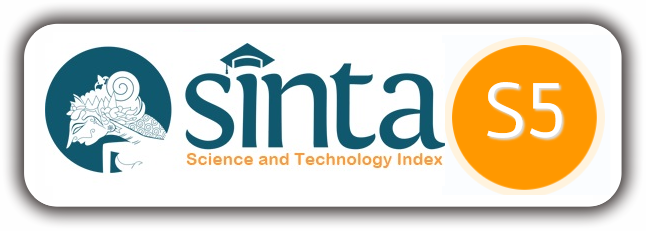The Impact of QRIS on Consumer Behavior in Urban Areas
DOI:
https://doi.org/10.59525/jess.v4i2.957Keywords:
Digital payment system; Consumer behavior; Urban; QRIS.Abstract
The purpose of this study is to study how urban consumer behavior is influenced by the implementation of digital payment systems, specifically the Quick Response Code Indonesian Standard (QRIS). This study used a quantitative approach, sending questionnaires to respondents in urban areas. The research results show that QRIS usage and ease of access influence consumer behavior. Key findings indicate that people purchase more frequently, are more likely to engage in consumer behavior, and prefer cashless payments. Due to the convenience of QRIS, 62% of respondents reported making more impulse purchases. In addition, consumers' perceptions of the practicality and security of QRIS also help them prefer to use it. The majority of respondents considered QRIS secure (76%) and faster than cash payments (84%). This research shows that QRIS implementation not only increases the speed and convenience of transactions but also has socio-economic consequences, such as an increased propensity to spend more money in urban areas.
References
Akhwanul, A., & Lutviani, M. (2024). Qris app user behavior models and their relationship to impulsive buying. Business Lantern Journal, 13(3), 1592–1606. https://doi.org/10.34127/jrlab.v13i3.1207
Collins, S. P., Storrow, A., Liu, D., Jenkins, C. A., Miller, K. F., Kampe, C., & Butler, J. (2021). The effect of the ease of use of QRIS (Quick Response Code Indonesian Standard) as a payment transaction on entrepreneurs’ interest in using QRIS. International Journal of Management, 10(14), 167–186. https://doi.org/10.5281/zenodo.13627005
Firsanty, F. P., Jatnika, D. C., & Puspita, D. P. (2025). Preference for the use of QRIS in MSME actors and consumers in the city of Bandung. Responsive, 8(2), 391–399. https://doi.org/10.24198/responsive.v8i2.63707
Gede, I. B., & Mahyuni, L. P. (2023). Consumer perceptions of benefits and barriers of QRIS in coffee shop businesses. JRMSI - Indonesian Journal of Science Management Research, 14(2), 91–102. https://doi.org/10.21009/jrmsi.014.2.08
Gumilang, Y. H., Pratiwi, N., Kusumaningrum, F. R., & Digital Business Study Program. (2023). Khidmatussifa: Journal of Islamic Studies volume 1 number 3 (2023). Khidmatussifa: Journal of Islamic Studies, 1(3), 118–128. https://doi.org/10.56146/khidmatussifa.v3i2.121
Kartika Cahyaning, E., & Puspawati, R. A. (2024). Systematic literature review (SLR): The effectiveness of using QRIS as a transaction tool. Ratio: Indonesian Contemporary Accounting Review, 5(2). https://doi.org/10.30595/ratio.v5i2.21989
Michael, G., Widjaya, W., & Gui, A. (2024). Analysis of factors affecting behavioral intention to use QRIS. In Proceedings of the 2nd International Conference on Emerging Trends in Information Technology and Engineering (IC-ETITE 2024) (Vol. 8, No. 15, pp. 1–15). IEEE. https://doi.org/10.1109/ic-ETITE58242.2024.10493415
Nasih, A. M., Gati, V., & Rahayu, S. (2024). The effect of ease of use perception, benefit perception, trust perception, risk perception and barrier perception on interest in using QRIS mediated by attitudes towards QRIS. Journal of Accounting, 12(3), 302–316. https://doi.org/10.26740/akunesa.v12n3.p302-316
Putri, I. D., Fauzita, K. A., Nursianda, A., Aulianti, F., Rais, E. H., Sibarani, N. K., Wijaya, R., & Rozak, A. (2024). The impact of QRIS payment instruments on the sales turnover of culinary traders. Trending: Journal of Economics, Accounting and Management, 2(3), 1–16. https://doi.org/10.30640/trending.v2i3.2453
Rifka, A. M., Suraharta, I. M., & Jaya, I. I. (2024). Trends in the use of electronic money against the digital age: Implications. Journal of Digital Economy, 2(1), 306–312.
Tatian, C. T., Nurabiah, R., Ridhawati, R., & Thao, H. T. P. (2024). From wallets to screens: Exploring the determinants of QRIS payment adoption among millennials in Eastern Indonesia. JEMA: Jurnal Ilmiah Bidang Akuntansi dan Manajemen, 21(1), 87–113. https://doi.org/10.31106/jema.v21i1.21712
Downloads
Published
How to Cite
Issue
Section
License
Copyright (c) 2025 Ringga Sentagi Asa, Fildzah Shabrina

This work is licensed under a Creative Commons Attribution 4.0 International License.












